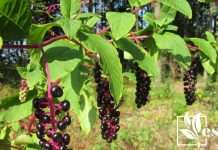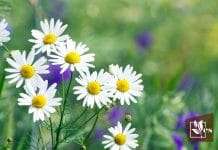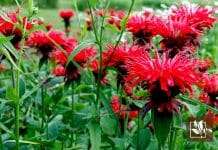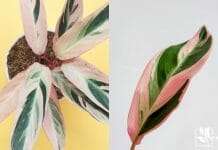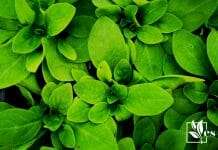Las Vegas plants provide you with an opportunity to landscape in this region with ease. However, we cannot ignore the challenging growing conditions that this area experiences.
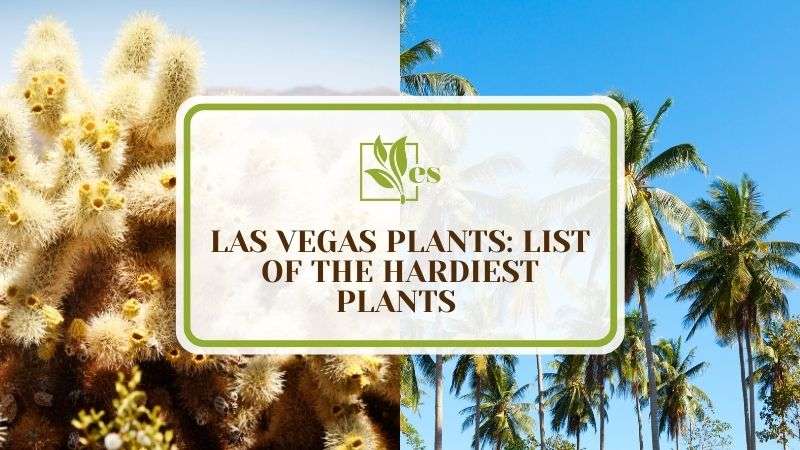 To manage these challenges, it’s best to choose only the hardiest plants. This article will highlight all the species you can use in your landscaping.
To manage these challenges, it’s best to choose only the hardiest plants. This article will highlight all the species you can use in your landscaping.
JUMP TO TOPIC
- List of Las Vegas Plants
- 1. Cholla Cactus
- 2. Palm Trees
- 3. Texas Sage
- 4. Switchgrass
- 5. Honeysuckle
- 6. Fan Flower
- 7. Desert Marigold
- 8. Salvia
- 9. Dorr’s Sage
- 10. Blue Star
- 11. Creosote bush
- 12. False Indigo
- 13. Globemallow
- 14. Juniper
- 15. Palmer’s Penstemon
- 16. Caladiums
- 17. Apache Plume
- 18. North Pole Arborvitae
- 19. Blue Flax
- 20. Snake plant
- 21. Desert Willow
List of Las Vegas Plants
1. Cholla Cactus
Cholla is the general name given to a group of cacti, the cylindrical, elongated, and branching stems.
– Properties
They are covered in spines, that have a few leaves appearing at the stem tips before flowering. They have large yellow or showy red flowers, which would bloom in spring or early summer seasons.
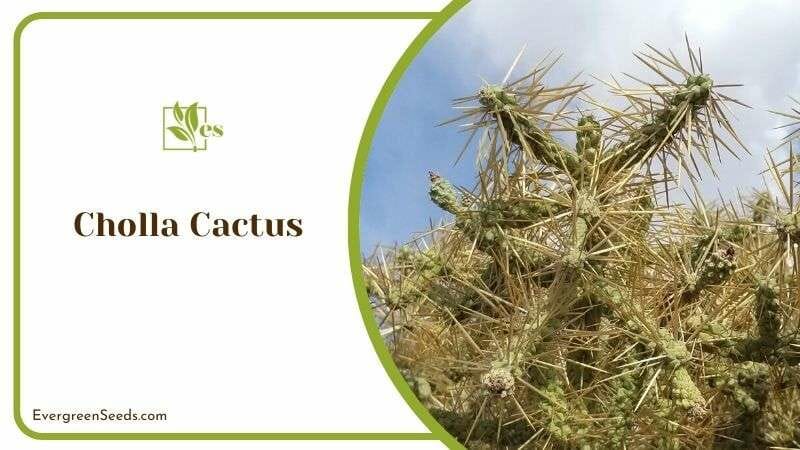 These cacti are common in this region, growing from six inches to six feet, depending on the species. Several species of the cholla cactus are available and can be identified by their height, thickness, and the density of the spines. Examples of these cacti would include the blue diamond, buckhorn, matted, pencil, silver, teddy bear, or even the Whipple.
These cacti are common in this region, growing from six inches to six feet, depending on the species. Several species of the cholla cactus are available and can be identified by their height, thickness, and the density of the spines. Examples of these cacti would include the blue diamond, buckhorn, matted, pencil, silver, teddy bear, or even the Whipple.
– Growing Conditions
They require little water to survive, hence they are significantly ideal in a dry region like this. Remember that they thrive on rocky and dry soils. Furthermore, they are commonly propagated from broken stems that fall on the ground. If the conditions are not ideal and it does not look healthy, you should check if the cactus is dead and if you can revive it.
2. Palm Trees
Palm trees have been iconic in Las Vegas for many decades. Most people use them to bring life to their landscape and are one of the best Las Vegas desert plants. You can choose to grow any palms that include—king, date, sago, pineapple, Piru Queen, Fan, or pindo palms.
– Features
They create the much-loved oasis feel for your home, primarily when grown around swimming pools.
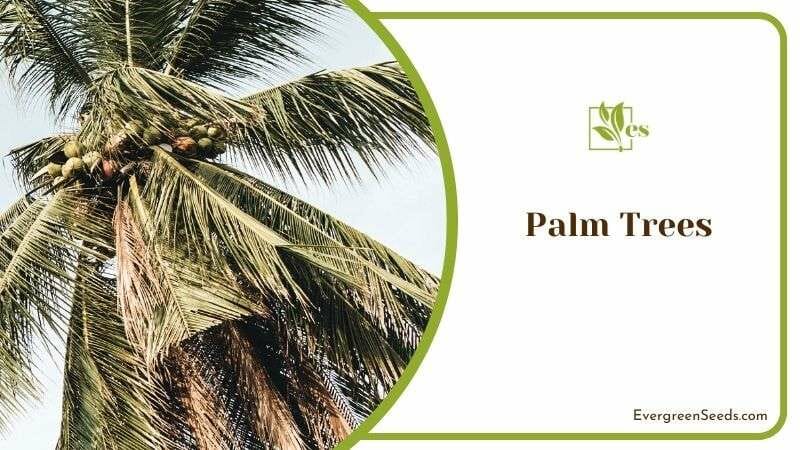 They do not take up much space, hence they are the ideal ones even for small compounds. Furthermore, they would thrive and grow 30 to 50 leaves when they are given the perfect requirements.
They do not take up much space, hence they are the ideal ones even for small compounds. Furthermore, they would thrive and grow 30 to 50 leaves when they are given the perfect requirements.
– Maturation
These trees are hardy, low maintenance, and attractive, requiring less water to grow. They tolerate the full desert sun and cold winters. Keep in mind that they thrive in various soils, including sandy, loam, and poor soils.
3. Texas Sage
Another excellent choice for your landscape is the Texas sage. It is a slow-growing plant that is native to Texas and Northern Mexico.
– Characteristics
This Vegas plant has silver, gray, and green foliage and takes up to two years to fully mature and bloom. It blooms after a good rainstorm, and watering it heavily does not work.
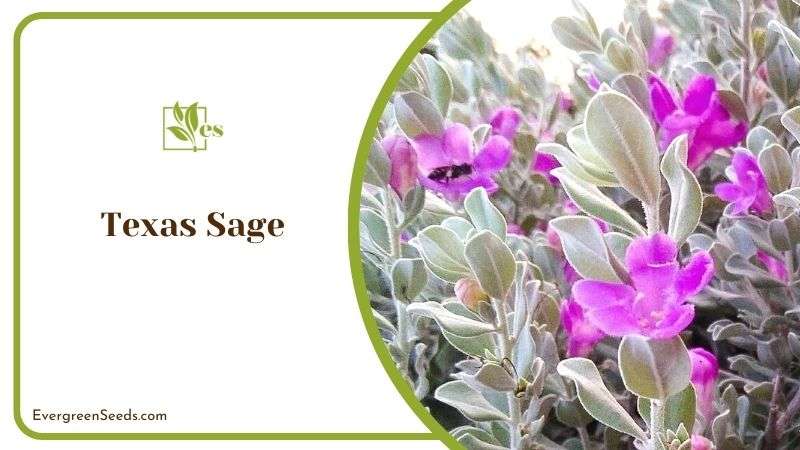 It is an exquisite addition to your home, bringing such beauty when it is in its bloom. Not only that, but it attracts bees and other pollinators when in the blooming season.
It is an exquisite addition to your home, bringing such beauty when it is in its bloom. Not only that, but it attracts bees and other pollinators when in the blooming season.
– Thriving Mode
This plant can grow to about six feet tall and get more blooms as it grows older. It is one of the drought tolerant plants for Las Vegas, requiring little water to thrive, and thus easy to maintain. It will thrive as it receives about six to eight hours of sunlight on a daily basis.
4. Switchgrass
Switchgrass is one of the most common grasses grown across the United States.
– Locating
It is a perennial native to North America and developed as an ornamental grass. You can find this grass in pastures, roadsides, or prairies. It fits everywhere easily in almost every landscape, making it an ideal choice for most homeowners.
– Features
This popular grass is hardy and deep-rooted, growing to a height of almost eight feet. It is one plant that tolerates drought and high temperatures. Moreover, it is a warm-season grass that starts growing in late spring.
– Different Types
There are different types of switchgrass, as some types of this grass, would grow in a bunch of grass habit, while others tend to be more sod-farming.
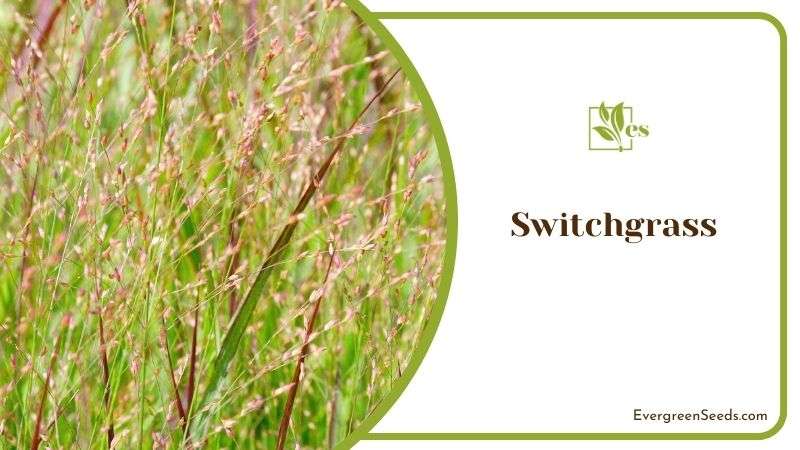 This ornamental grass has stiff round stems and dense columnar form. The rain or snow often bends the stems to the ground, but this grass bounces back once the weight is gone.
This ornamental grass has stiff round stems and dense columnar form. The rain or snow often bends the stems to the ground, but this grass bounces back once the weight is gone.
However, this grass has medium green foliage tinged with red and may turn to shades of yellow during fall, bleaching out the beige over the winter.
– Growth Requirements
It is drought-resistant and colorful, bringing your home to life. It requires full sun to thrive and tolerates any soil type, including heavy clay and alkaline soil. Nonetheless, this grass would grow very tall, reaching up to five feet, and can be mixed with other short shrubs to create your landscape theme.
5. Honeysuckle
Honeysuckle is a native shrub to North America and Eurasia. It has over 180 species, widely grown in almost every state in America. The commonly known species include Japanese, coral, and Chinese honeysuckle. It is one of the best flowering shrubs for Las Vegas.
– Key Feature
It is a delightful plant for your Las Vegas landscape, growing as a shrub or vine. In addition, it is commonly used by being placed on the fence or boundary as it is wildly attractive to any garden.
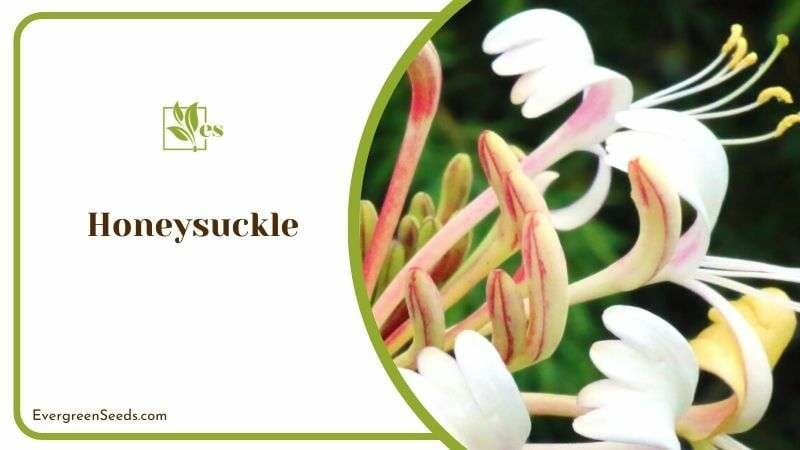 This plant is an excellent addition to the landscape as it attracts pollinators and animals with its sweet, white, yellow, or bright red flowers. This plant will add a whimsical, sweet-smelling aroma to your home.
This plant is an excellent addition to the landscape as it attracts pollinators and animals with its sweet, white, yellow, or bright red flowers. This plant will add a whimsical, sweet-smelling aroma to your home.
– Requirements
Honeysuckles prefer full sun and partial shade to thrive in. It also tolerates different soil types, though it loves well-drained, rich soil with organic matter. They would ask for less frequent watering, allowing the soil to dry between the schedule.
6. Fan Flower
Fan flower is an annual plant native to Australia but growing across America due to its heat-tolerant and pest-resistant nature. It is a splendid summer plant to grow in the Las Vegas landscape.
– Properties
This plant puts on an outstanding display of delicate flowers with small petals in a fanlike pattern starting from spring to fall.
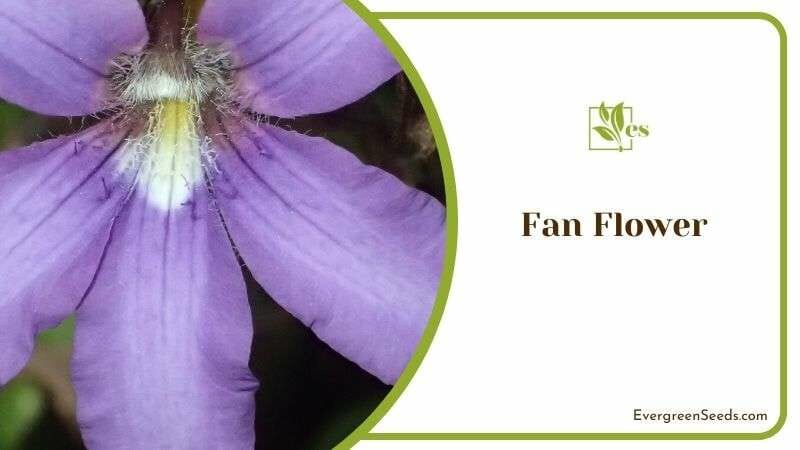 Even better, the flowers still bloom even when facing extreme temperatures and will continue to thrive even when rarely watered, overall, that is how resilient they are.
Even better, the flowers still bloom even when facing extreme temperatures and will continue to thrive even when rarely watered, overall, that is how resilient they are.
– Features
They have five petals colored blue, white, pink, or purple. The leaves are rounded and slightly toothed on the stems.
– Essentials
Fan flower is among the indoor plants Las Vegas that do well in pots or gardens.
This plant will happily grow in full sun and does well in hot, dry summers. However, it is essential to provide it with medium to well-drained soils, watered less frequently. You can grow it in hanging baskets, landscape beds, window boxes, or anywhere you want them.
7. Desert Marigold
Desert Marigolds are native to the desert of Northern Mexico and the Southwest United States, which is why Nevada or Las Vegas is the perfect place for it to grow. This plant is a remote relative of the true marigolds.
– Key Characteristics
It is a short-lived perennial that forms clumps of silver-green foliage. It grows up to 20 inches tall with three inches of leaves.
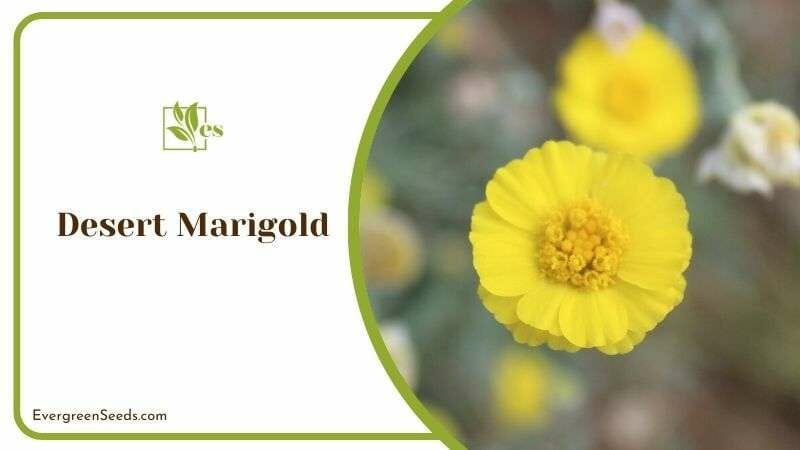 Each bloom would grow and become two inches in its diameter, and they would add a colorful atmosphere to your garden.
Each bloom would grow and become two inches in its diameter, and they would add a colorful atmosphere to your garden.
– Growing Conditions
It is a sun-loving species that thrives on sandy or gravelly soils. It has small daisy-like flower heads that bloom in the spring and summer seasons.
Moreover, they would grow to about a foot high, however, some may be shorter, and this is normal. Desert marigold is drought tolerant and requires full sun for best growth. It requires less frequent watering only when necessary.
8. Salvia
Salvia is the largest genus of the sage family, with about 1000 species of annuals, perennials, herbaceous, and shrubs.
– Pollinator Attraction
Many of these plants have a strong, pleasant smell that attracts bees, hummingbirds, and butterflies. As these pollinators like to come and settle on them in spring when everything blooms.
– Key Feature
Most salvia plants bloom for a long period, extending from late spring to fall, bringing a colorful design to your garden.
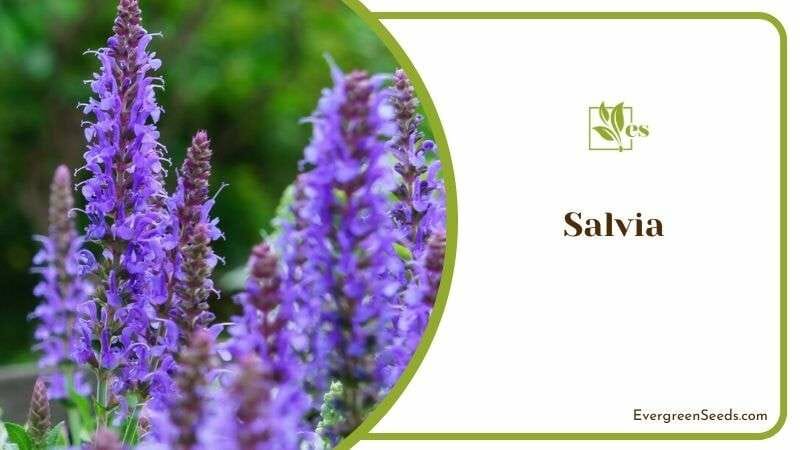 This plant is heat tolerant and a great addition to your landscape. These plants would re-bloom repeatedly for many years and are deer and rabbit-resistant, hence most people like to add them to their gardens.
This plant is heat tolerant and a great addition to your landscape. These plants would re-bloom repeatedly for many years and are deer and rabbit-resistant, hence most people like to add them to their gardens.
– Growing
You plant them in the spring after the frost has passed in a full sun area with well-drained soils. These plants do not have significant problems with diseases or pests. Keep in mind that you should water about one inch every seven to 10 days.
9. Dorr’s Sage
The Dorr’s sage is a perennial native to the Western United States and Southward Mojave Desert. Most people grow this plant as the best shrub that thrives perfectly well in las Vegas.
– Attributes
It has gray-green leaves that are narrowly tapered at the bottom and even rounded at the top. It has an intense minty scent anytime you crush or handle the foliage.
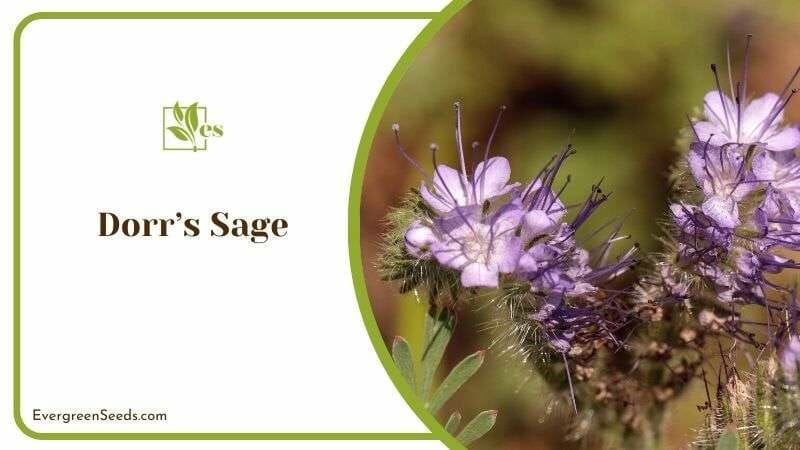 Its branches form extensive clumps, forming tight bushes that cover the ground. It produces clusters of purple, rose, or blue-colored flowers in late spring and early summer.
Its branches form extensive clumps, forming tight bushes that cover the ground. It produces clusters of purple, rose, or blue-colored flowers in late spring and early summer.
– Growing Requirements
In order to see it grow remember that this plant enjoys full sun growing conditions and thrives even on dry days, in addition, it thieves well in dry, well-draining soils.
Keep in mind that this plant requires less water, low maintenance, and is heat and cold tolerant. It is a classic example of desert hardiness, attracting bees, butterflies, and hummingbirds for pollination.
10. Blue Star
The Blue star plant gets its name from its soft blue star-shaped flowers. This plant is originally from North America but proliferates without any problem in most parts of the US, including Las Vegas.
– Features
They are tiny, but they appear lovely once they bloom in their fluffy clusters. It is one of the best outdoor flowers for Las Vegas, especially the color that it has, makes it stand out.
– Characteristics
The blue star grows to at least two to three feet tall and wide, it also depends on the variety and the growing conditions you provide. You will get a small, tidy shrub that grows in a clump.
– Garden Addition
If you are looking for an excellent shrub for your landscape, this one will not disappoint. It produces blooms that are so blue, bringing brilliance to your home.
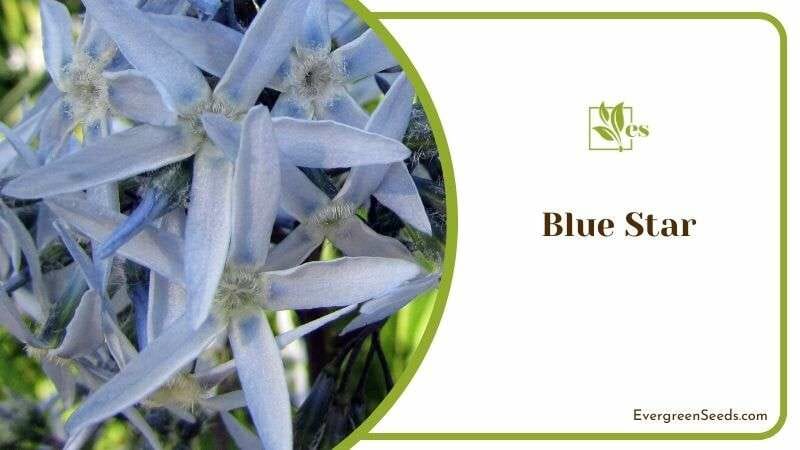 These flowers are magnificent pollinating grounds for bees, hummingbirds, and butterflies. The foliage is green but turns yellow in the fall.
These flowers are magnificent pollinating grounds for bees, hummingbirds, and butterflies. The foliage is green but turns yellow in the fall.
– Care Guide
The blue star is easy to grow with low maintenance and less water. Plant it in well-drained soils, either sandy or loam. You don’t have to fertilize this plant, as it does well without more nutrients.
11. Creosote bush
This bush is common in all the Southwestern hot deserts, including Southern Nevada, basically it is one of the best shrubs for Las Vegas.
– Resilience
It tolerates arid conditions by its ability to survive in the harshest places. It usually beats all other plants competing for water as the only plant surviving in the driest seasons.
– Characteristics
This evergreen shrub grows to about ten feet tall and has dark green resinous leaves. These tiny leaves have adapted to conserve the little water and dissipate the heat. Even though a few leaves may be lost during an extreme drought, however, most of them remain intact.
– Period of Blooming
It blooms in spring and summer, brightening the world with its yellow blooms. The leaves release a scent similar to the smell of rain.
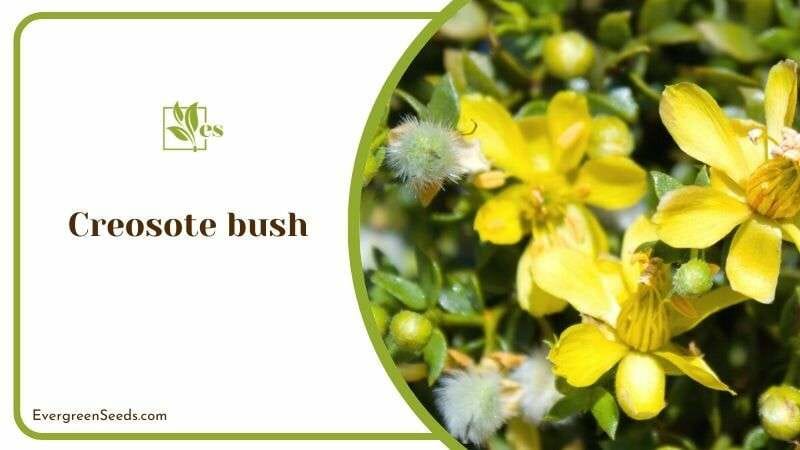 They are a refuge for praying mantis, grasshoppers, and crickets.
They are a refuge for praying mantis, grasshoppers, and crickets.
– Growing Conditions
Creosote bush will thrive in hot blazing suns and well-drained soils. A sunny, warm location is ideal for growing this plant as it tolerates heat. Remember that you may want to water this plant sparingly, as it does not need too much water to grow.
However, resist the urge to neglect it, as it will not do well, which is how it is resilient. But as you take good care, it will reward you with a fragrant yellow bloom in the midst of springtime.
12. False Indigo
This perennial herb is large and upright with gray yet green-colored, beautiful leaves. It is native to Eastern, Central, and North America and common in the Midwest. Naturally, it grows wild along the streams, at the borders of the wood, or in open meadows.
– Specific Features
It has pea-like indigo-blue flowers blooming from spring to summer. This plant makes a great architectural statement in your garden even after the flowers are gone.
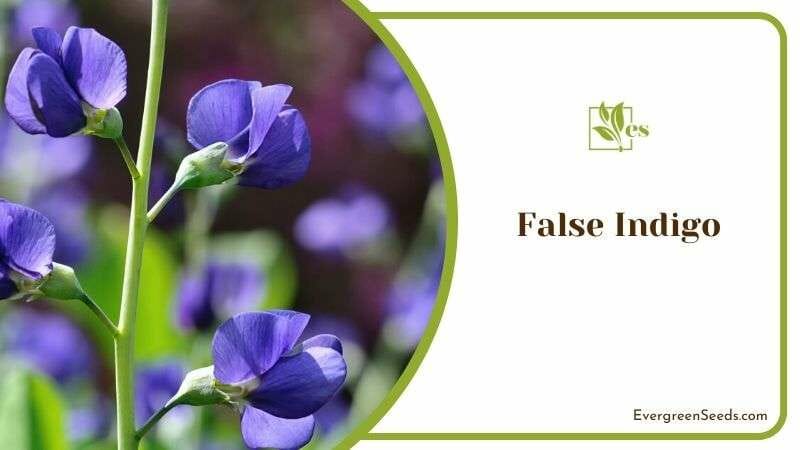 It takes about a year for this plant to reach its full height, while some can take as long as four years. Moreover, it would grow two to three feet tall. Plant it in the spring after the heavy frost has passed to prevent it from death.
It takes about a year for this plant to reach its full height, while some can take as long as four years. Moreover, it would grow two to three feet tall. Plant it in the spring after the heavy frost has passed to prevent it from death.
– Intoxicating
This plant is toxic to animals and humans due to its alkaloid compounds, causing nausea and vomiting.
Keep in mind that most people have accidentally consumed them, thinking the young stems are asparagus. The toxicity is mild, but it bothers the stomach or the gut health. It also makes this plant inedible to insects, causing it to grow problem free.
13. Globemallow
The Globemallow is a perennial shrub native to Nevada, California, Arizona, and Utah.
– Characteristics
It grows when taken proper care and reaches up to three feet tall and even four feet wide. Its leaves are fuzzy, carrying white hairs on each side. Note that they are also lobed and veined, growing on long stems that increase with age.
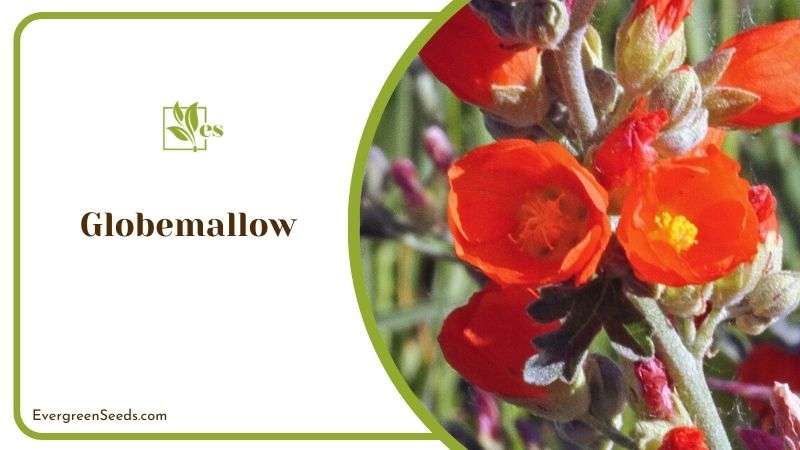 On the other hand, the flowers are saucer or bowl-shaped, carrying five petals with apricot to dark orange-red, and bloom in summer. You may find some larvae of butterflies and moths enjoying this plant.
On the other hand, the flowers are saucer or bowl-shaped, carrying five petals with apricot to dark orange-red, and bloom in summer. You may find some larvae of butterflies and moths enjoying this plant.
– Growing Requirements
This plant thrives in USDA hardiness zones three to nine under full sun. It does well in sandy, well-drained soils without frequent watering. In addition, it thrives in alkaline soils, both clay, and sandy. Nonetheless, you will find this plant mainly in the company of creosote bush.
14. Juniper
Juniper is a popular ornamental plant that grows in carefree nature, being a unique resilient plant.
– Features
It has different shapes, from ground-hugging juniper bushes to high towering trees.
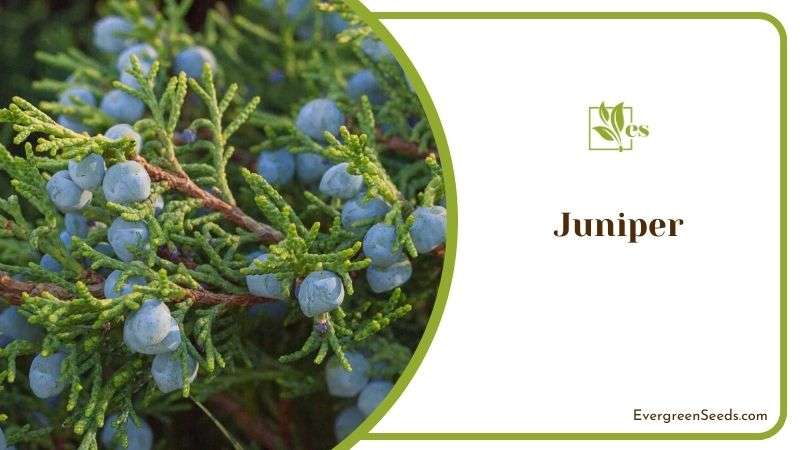 There is a juniper that meets every landscape need, whether it’s a slope due to erosion or a privacy hedge for your home.
There is a juniper that meets every landscape need, whether it’s a slope due to erosion or a privacy hedge for your home.
– Characteristics
It is one of the members of the cypress family, with about 60 species that grow across from tropical Africa to the Arctic region. It is a low-maintenance plant that can tolerate harsh dry weather. In addition, it is drought tolerant as well, creating wildlife habitat. Junipers are not the same as Cypresses even though they belong to the same plant family.
– Care Guide
It can grow in almost all soils, including alkaline soils in Las Vegas. The height of this plant depends on the species you are growing. You can always count on junipers to bring a touch of color to your garden.
15. Palmer’s Penstemon
Palmers is known for the best showy rounded flowers and their scent. It’s one of the few scented penstemons that most gardeners cherish.
– Origins
It is native to the desert mountains and thrives in the weather of the Eastern Mojave Desert, Eastern Nevada, New Mexico, Northeastern Arizona, Utah, Idaho, Wyoming, and Eastern Washington.
– Characteristics
This plant is drought-tolerant and may even survive with little to no water for a reasonable time. It grows to about six feet tall, with its beautiful leaves opposite each other. It has flowers with large petals, usually pink, violet, or blue-purple.
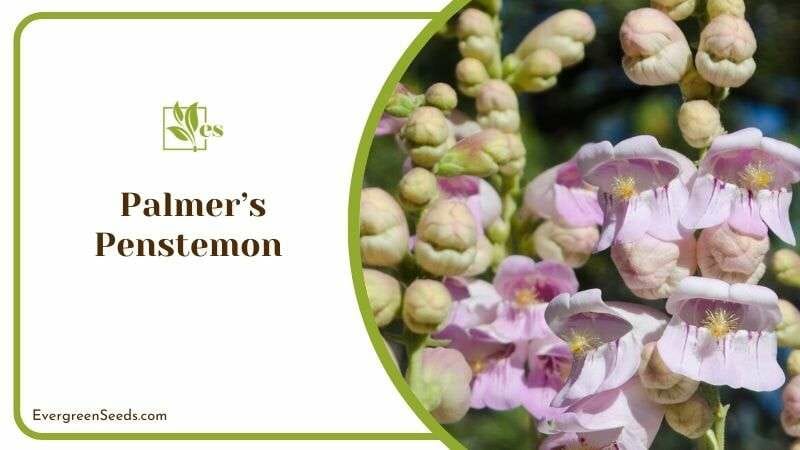 Sometimes the flowers can be red, yellow, or white. It is evergreen and loved by butterflies, bees, and birds.
Sometimes the flowers can be red, yellow, or white. It is evergreen and loved by butterflies, bees, and birds.
– Growing Conditions
This plant thrives in USDA hardiness zones four to ten under full sun. It prefers sandy, well-drained soils without frequent watering because it doesn’t need high humidity or moisture. You propagate it by seed or division of healthy, established plants.
It does not need fertilization or mulching, either. You may even deadhead it after flowering to maintain a tidy appearance. In most cases, if flowers are left alone, they self-seed, producing many other plants within the same area.
It attracts hummingbirds, bees, and butterflies with its bloom. Remember to water it less frequently and let the soil dry completely between schedules.
16. Caladiums
Caladiums are the staple for most hot areas in America, including Las Vegas. This plant does well in hot weather without any complications and adds great shade to your landscape. It is one of the best potted plants in Las Vegas.
– Moisture Necessities
These plants will help you work on your landscape in hot areas without worrying about the hot temperatures and their effects.
All you need to provide this plant is a little moisture every now and then. Caladiums originate from Central and South America and are even found in some parts of Africa, hence they originate from an area that is highly humid.
– Features
These plants are known for their big heart-shaped leaves with fantastic color combinations of pink, white, green, and red. They are commonly grown in borders, between shrubs, or under trees.
– Growing Conditions
They thrive in hot, humid weather, and they rarely flower. However, the leaves are a colorful show already.
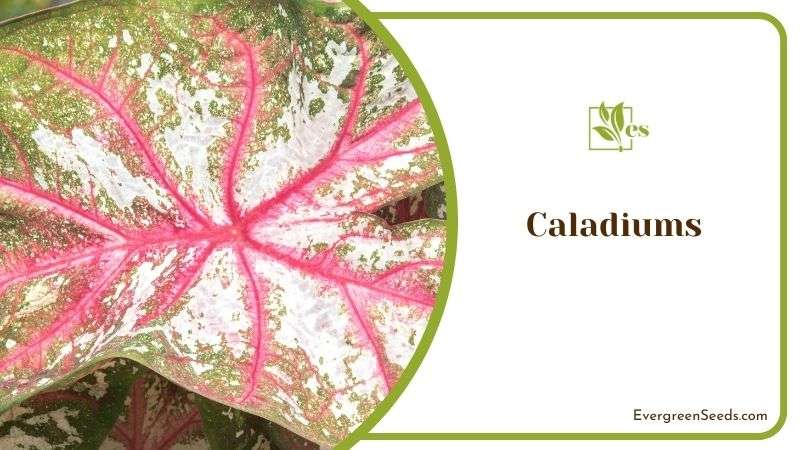 In addition, you would see this plant growing in open forests and river banks. Likewise, they go dormant during the dry season but can keep growing if you water them a little. Not only that, but they grow to be about 15 to 35 inches tall.
In addition, you would see this plant growing in open forests and river banks. Likewise, they go dormant during the dry season but can keep growing if you water them a little. Not only that, but they grow to be about 15 to 35 inches tall.
Some cultivars of this plant are sun resistant and thrive under the full sun, while some traditional ones will need partial shade. Provide adequate moisture to the soil, but don’t overwater it.
Fertilize your soils regularly during the growing season significantly when growing them in pots, as they are heavy feeders. Use a low-nitrogen fertilizer or balanced formulation for the best results. Too much nitrogen will affect the leaf color.
You propagate this plant from tubers and plant them before the first frost or the soil temperature drops to 55 degrees Fahrenheit. You must start watering after the new growth appears in the spring.
17. Apache Plume
Apache Plume is native to the Southwestern United States, the desert Woodlands, and Northern Mexico. Apache plume is a slender, deciduous semi-evergreen shrub that is easy to grow.
– Features
Apache is a unique plant with outstanding features. It grows to around 8.5 feet tall and has a gray or whitish peeling bark on many thin branches. The leaves are distinctive, with their edges rolled under. However, the upper surface is green and hairy, while the underside is scaly and dull.
– Flower’s Features
It has some stunning flowers that would bloom in the springtime and again in the fall, these flowers resemble a rose when in their blooming phase. It has rounded white petals, and its center is filled with many thready pistils and stamens.
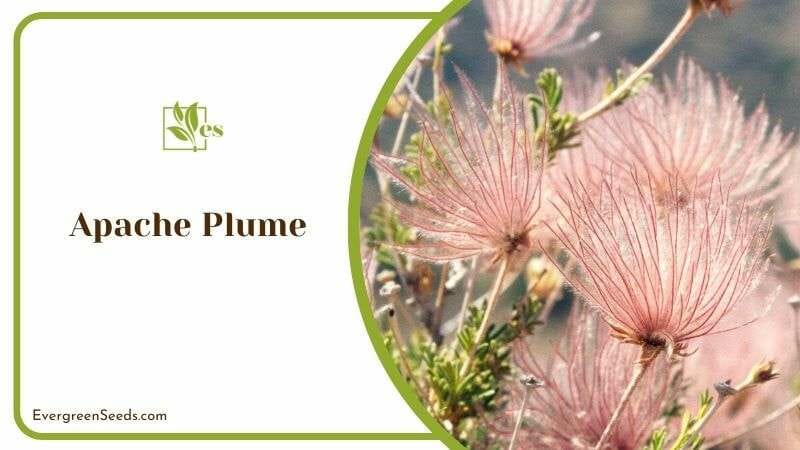 The center of this flower remains while the white petals fall away. This leaves a plumelike lavender style. The pinkish clusters cover the plant after it finishes flowering to cover the developing fruit.
The center of this flower remains while the white petals fall away. This leaves a plumelike lavender style. The pinkish clusters cover the plant after it finishes flowering to cover the developing fruit.
– Care Requirement
You propagate this plant from seeds. It is one of the showiest native shrubs, growing in USDA zones four to nine. It thrives in full sun and well-drained soils that need to be watered less frequently. Furthermore, it can also grow in sandy, poor, or average soil, and it would be just fine.
18. North Pole Arborvitae
The North Pole arborvitae is one of the most loved plants in Las Vegas. This explains why a majority of this area is covered with these plants; however, if you are looking for a fast-growing plant that is evergreen and will provide your home with a privacy screen, go for this one.
This plant is affordable to buy and requires less maintenance than other plants. You may count on it to hold up well in sandy soils and dry areas while making your landscape stand out.
– Characteristics
The North Pole is evergreen and easy to care for. It is dark green and remains beautiful all year round, even in the cold winter season.
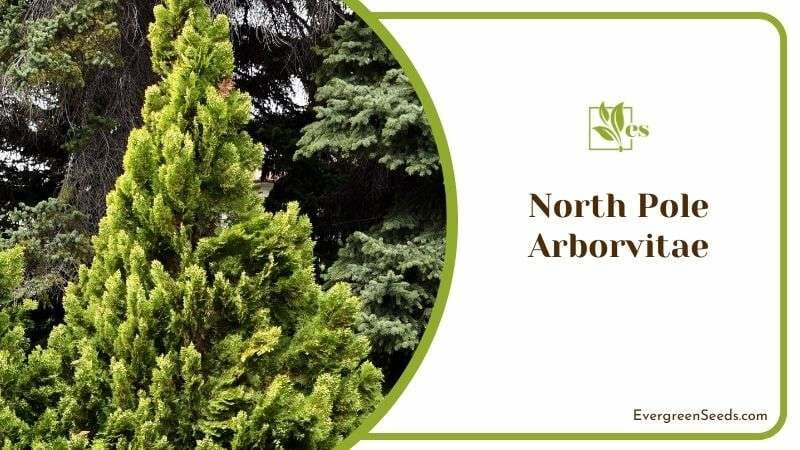 It is a hardy plant, having foliage that is resisting in the winter burn even in the coldest weather.
It is a hardy plant, having foliage that is resisting in the winter burn even in the coldest weather.
– Growing
This plant does well in USDA zones three to seven. It grows to a height of 15 feet, spreading to five feet wide. Plant it in well-drained soils and a location where it would be able to receive at least six hours of sunlight per day; however, once established, it does not require much care.
You don’t have to prune this plant, but you can trim it to the shape you like. Be careful not to trim it too much, as it will take longer to re-grow. You can fertilize this plant in the spring using a slow-release fertilizer for trees to give it prolific growth.
Fertilize North Pole Arborvitae in the spring with generic slow-release fertilizer designed for trees and woody material.
19. Blue Flax
Blue Flax is a perennial with wiry grass-like leaves and gorgeous violet-blue flowers that bloom in summer. It is interesting to know that this plant is used to make linen and the seeds are edible when cooked.
– Characteristics
Blue flax has blue-green needle-like leaves hanging on two feet tall stems. It blooms with satiny blue flowers on wiry stems, appearing late midsummer or spring. These flowers open on sunny days, with tiny, rounded seeds forming in summer.
– Growing Conditions
It is a drought-tolerant and low-maintenance plant that grows even in poor soils. In addition, it will need six hours of sunlight daily so that it can flower.
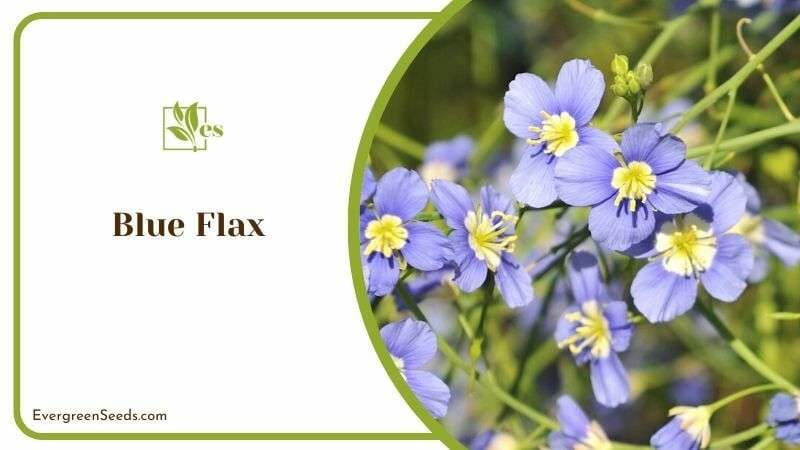 You can propagate this plant through seeds or cuttings. Plant the seeds in the fall when most pods have turned brown, and plant the cuttings in the springtime, right after the soil has warmed up. Overall, the perennial flax would require plenty of sunlight and even some shade or indirect light in order to thrive.
You can propagate this plant through seeds or cuttings. Plant the seeds in the fall when most pods have turned brown, and plant the cuttings in the springtime, right after the soil has warmed up. Overall, the perennial flax would require plenty of sunlight and even some shade or indirect light in order to thrive.
Though drought-tolerant, it will require watering less frequently to avoid overwatering. Water it in the morning to limit evaporation. Ensure the soil is well drained to avoid retaining the water for too long. Too much water will kill this plant’s roots.
20. Snake plant
This plant is commonly known as Mother-in-Law’s Tongue, the snake plant is one of the most love indoor plants in Las Vegas. It is hardy and pretty easy to care for, with its varieties highly adaptable to this region’s climate.
– Characteristics
Snake plant has stiff, sword-like leaves that grow to about six to eight feet tall. They vary in color, with many being green-banded with a yellow border.
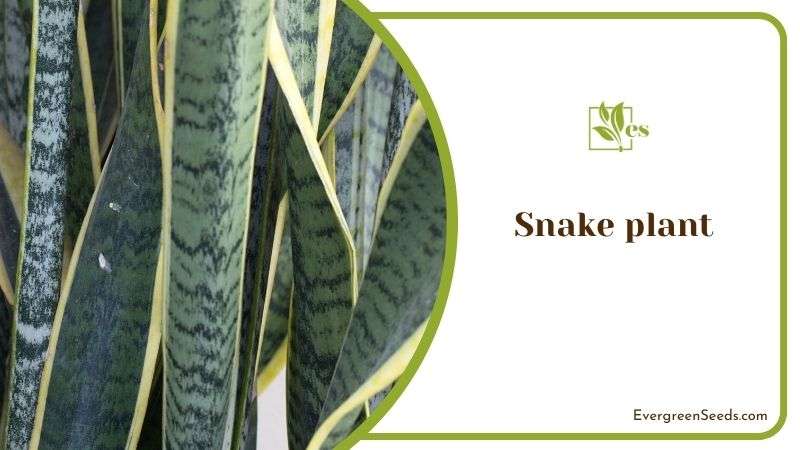 It has succulent leaves that do not need a lot of water; otherwise, it will become mushy.
It has succulent leaves that do not need a lot of water; otherwise, it will become mushy.
– Care and Maintenance
This plant can withstand drought and miss watering. It does best when the soil dries out completely before the next watering. It requires low indirect light to thrive, as too much light turns the leaves yellow.
21. Desert Willow
The native desert willow is a short, spindly, multiple-branched shrub that does well in Las Vegas. It is best to plant several desert willows in a row to create an outstanding border-type shrub.
– Characteristics
The leaves are drought-deciduous and tend to drop off when the soil dries. They are long, narrow, and drooping, similar to actual willow trees.
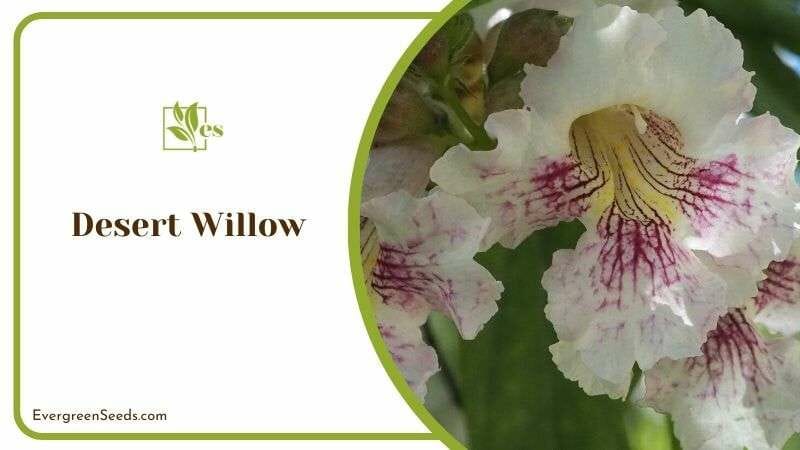 The flowers are large and tubular, colored pale pink or dark red-purple. It is a drought-tolerant plant that would grow to about 30 feet tall and 15 feet wide. You can trim it to make it good-looking for your landscaping needs.
The flowers are large and tubular, colored pale pink or dark red-purple. It is a drought-tolerant plant that would grow to about 30 feet tall and 15 feet wide. You can trim it to make it good-looking for your landscaping needs.
– Growing
Desert willow, like its name, thrives in a desert climate. It prefers sunny, hot, and dry areas with dry soils. It is suitable for USDA zones five to nine. Water it less frequently when growing, but it does not hurt when you forget.


